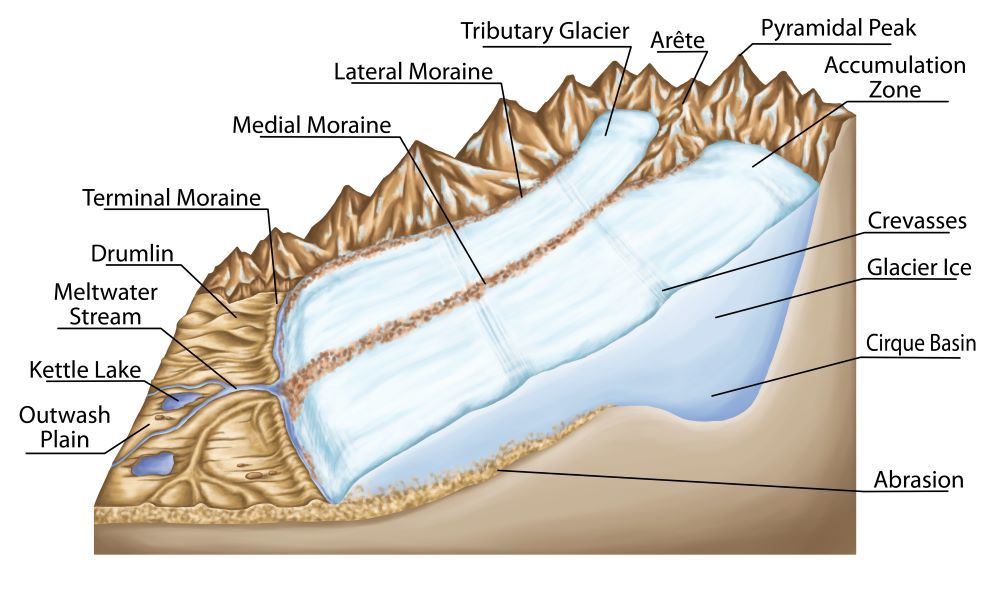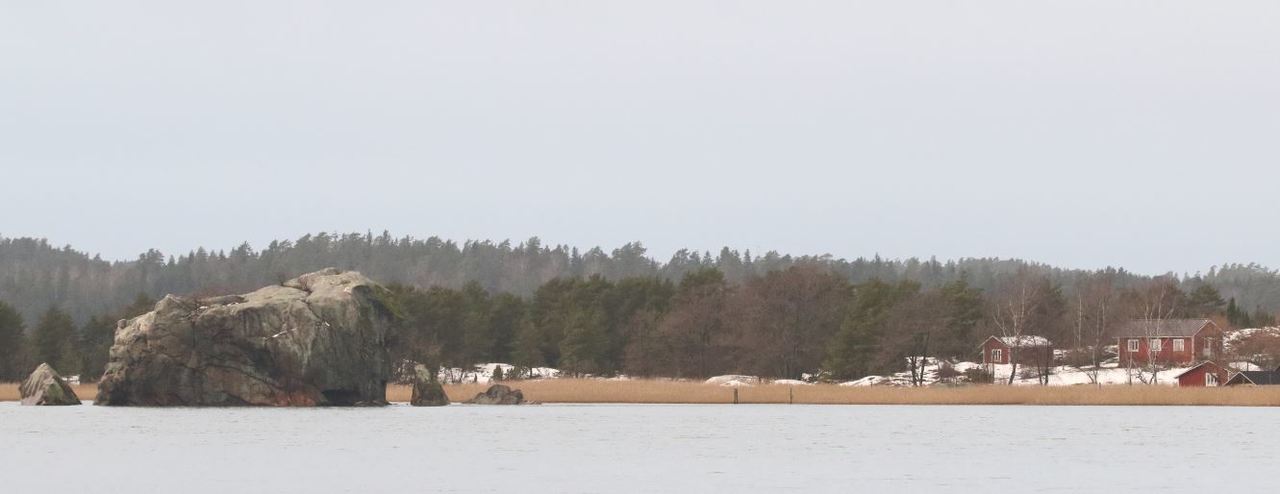3.3 Signs of advancing continental glaciers
| Sign | Description |
|---|---|
| Glaciated rock | Advancing ice sheets smoothed down the surface of rock. |
| Grooves in rock | Pieces of rock carried by the advancing ice sheets cut grooves and furrows in the surface of the rock. |
| Fissure valleys, gorge lakes | The bedrock had been cracked by an earthquake. Advancing ice sheets carried the loose rock material away from the crack. This resulted in the formation of valleys, gorges and pools. |
| Till | Ice carried small pieces of broken-down rock. When the ice melted away, these pieces of rock stood where they are, This resulted in the formation of till layers. |
| Erratic boulders | Ice sheets carried large boulders from one place to the next. |
| Drumlin | Advancing ice passed over bedrock and accumulated a ridge of till behind it. |
When the Ice Age progressed, the glacial ice advancing from the Scandes scraped over the Fennoscandian bedrock. The weight of the ice caused depressions in the bedrock, smoothed the surface of rocks and carried loose material from place to place.
Some of this loose rock material was crushed into smaller pieces by the advancing ice and was distributed almost everywhere in Northern Europe. This rock material formed the most common Finnish soil type, till, which is a mixture of rock material of different sizes, from large boulders to sand and clay.
Some of this till moved near the bottom of the continental glacier and was compressed by its enormous weight into a layer of ground moraine, which covers the majority of Finnish bedrock to this day. When the ice finally melted and retreated, this layer was covered by a sheet of loose superficial till, which had been carried inside and on the top of the continental glacier. In addition, the edges of the glacier accumulated smaller ridges of lateral and terminal moraine. As the planet's climate grew warmer, the ice sheets retreated and presented layers of De Geer moraine as the result of post-glacial rebound.

Signs of advancing and retreating glacial movement.
Drumlins were formed when the glacial ice advanced over the bedrock, leaving a ridge of till behind the rock's edge. These parallel hills, sometimes over a hundred meters long, often occur as a series that can consist of over a hundred individual drumlins.
The rock material carried by the advancing ice sheets also scraped and smoothed down the bedrock. The direction in which the glacial ice moved can be deducted by looking at the grooves left in smooth glacialized rock. These grooves were caused by rock material carried by the glacier that scraped furrows into the rock.
The advancing glacial ice could also carry larger pieces of rock. These large rocks are known as erratic boulders. Some of these boulders could be carried by the ice for over hundreds of kilometers.
The Finnish bedrock has been subject to various earthquakes during its history. This is how various fissures or cracks have formed in the bedrock. These fissures can often be seen in the form of high, straight cliffs. Between these cliffs, you can see the places where the bedrock has cracked during an earthquake, which have been further depressed by erosion. This is how the Finnish fissure valleys have been formed. The moving ice sheets carried loose rock material away from these valleys. When the ice retreated and melted, some of these valleys were filled with water, becoming narrow gorge lakes.
The glacial ice that advanced from the Scandes formed U-shaped valleys. In places where the continental ice met the water, different kinds of fjords were formed. These kinds of formations are common to the shores of Norway.
The Kukkarokivi rock near the island of Ruissalo in Turku is the largest visible erratic boulder in Finland. It is made of granite and is 12 meters tall.
